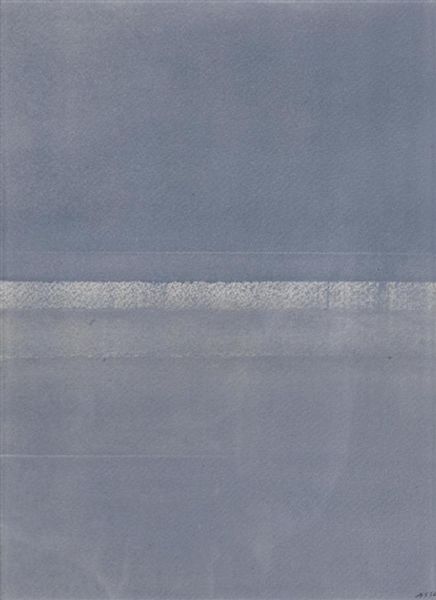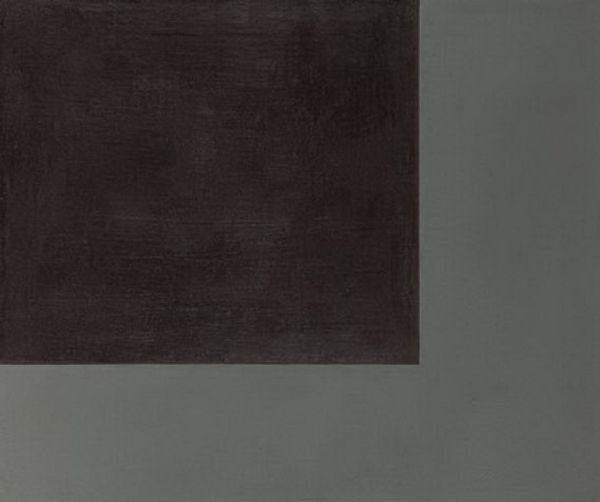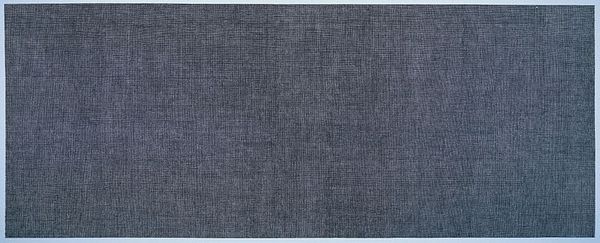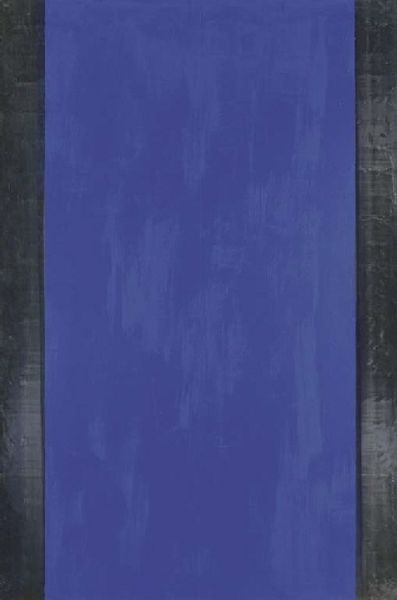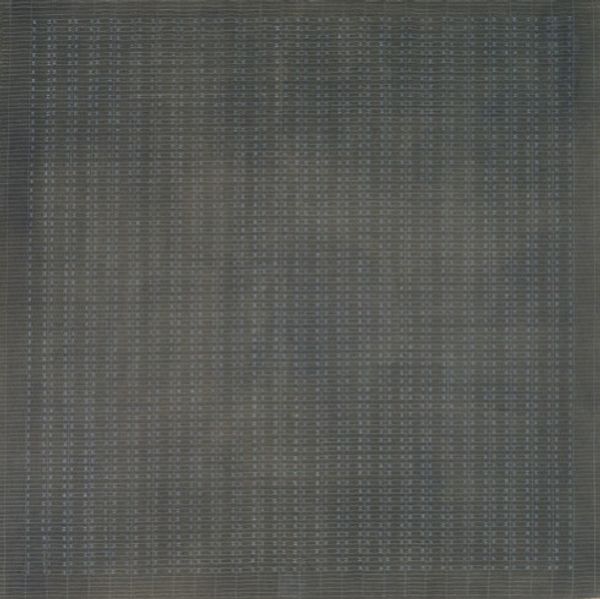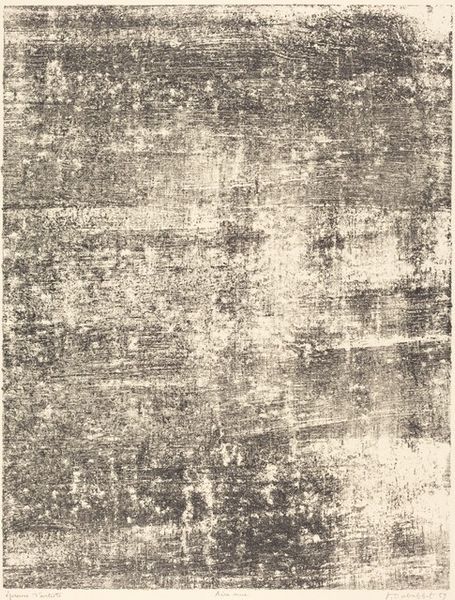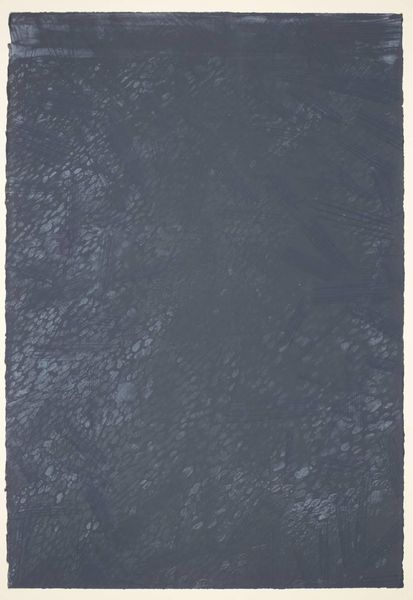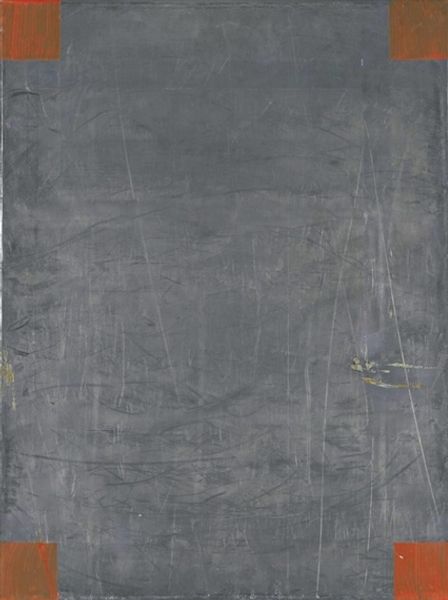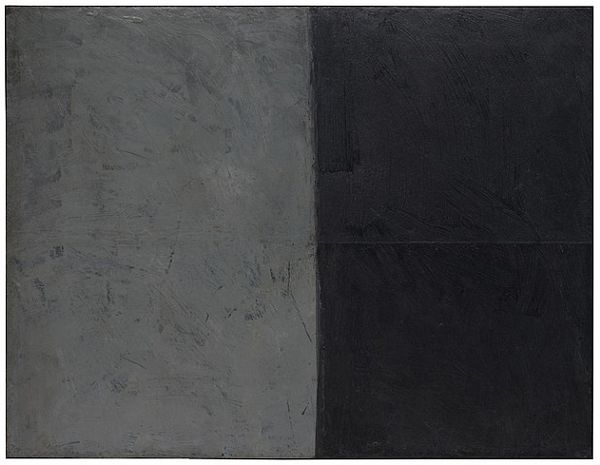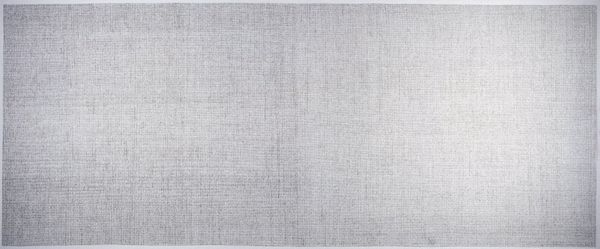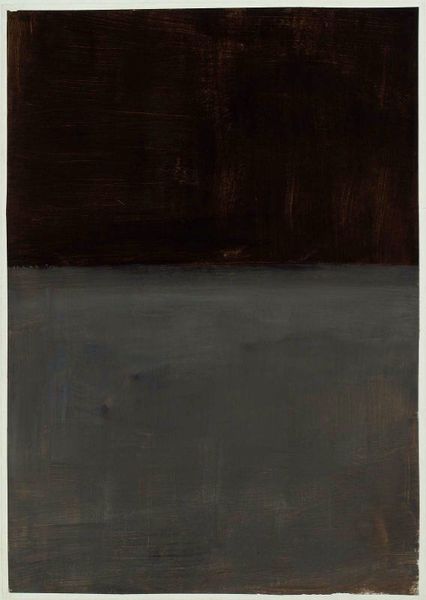
Dimensions: support: 3308 x 4955 x 68 mm
Copyright: © Helmut Federle | CC-BY-NC-ND 4.0 DEED, Photo: Tate
Curator: Helmut Federle's "Norwegian Sight" at the Tate presents a large-scale canvas dominated by dark, muted tones. Editor: It’s immediately somber. The texture gives it a raw, almost industrial feel. It evokes a sense of quiet intensity, of something withheld. Curator: Federle, born in 1944, often explores the intersection of abstraction and landscape. While the title suggests Norway, the painting resists easy representation. Editor: That resistance is key. The subdued palette and geometric divisions seem to reflect the country's starkness but also a certain melancholic identity often tied to place. Does it challenge perceptions or reinforce them? Curator: It’s definitely a dialogue. Federle's work has always engaged with architectural and geometric forms to frame a viewer's socio-political context of seeing. Editor: I agree. There is something elemental here, an almost primal meditation on form and feeling. Curator: It's fascinating how abstraction can still evoke such specific cultural associations. Editor: Precisely, Helmut Federle makes you reflect on how those associations are constructed.
Comments
tate 6 months ago
⋮
http://www.tate.org.uk/art/artworks/federle-norwegian-sight-t07463
Join the conversation
Join millions of artists and users on Artera today and experience the ultimate creative platform.
tate 6 months ago
⋮
Norwegian Sight 1997 is a large black-grey abstract painting by the Swiss artist Helmut Federle. The painting has a simple geometric composition that is dominated by a large T-shaped form positioned slightly left of the centre. The vertical element of the shape runs the full height of the canvas and the horizontal part reaches the full width of the composition, with its upper edge meeting the very top margin of the support. Flanked by an adjoining black vertical rectangle on the left and a black square on the right, the T-shape and its two connected geometric forms have been applied in flat, linear brushstrokes so that a repeating pattern of small, uneven squares is visible across the entire surface of the work. Its support is unprimed and small areas of raw canvas have been left visible. When juxtaposed with the prevailing black-grey colouration of the painting, the light cream hue of the exposed linen canvas creates a luminous shimmer within an otherwise dark composition.

